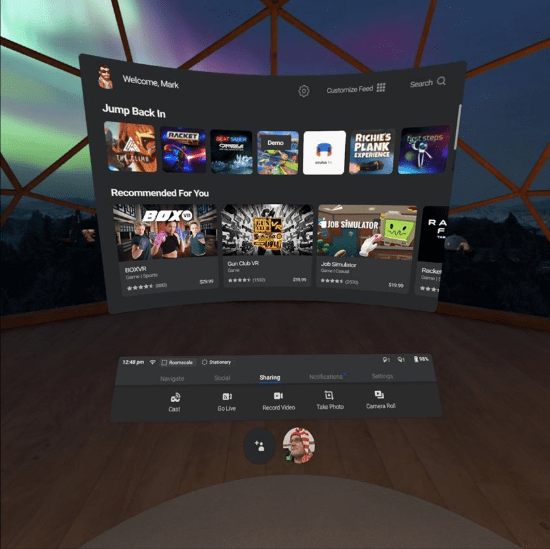Feb
2020
IM 690 VR and AR lab part 2
IM 690 Virtual Reality and Augmented Reality. short link: http://bit.ly/IM690lab
IM 690 lab plan for March 3, MC 205: Oculus Go and Quest
Readings:
- TAM:Technology Acceptances Model
Read Venkatesh, and Davis and sum up the importance of their model for instructional designers working with VR technologies and creating materials for users of VR technologies. - UTAUT: using the theory to learn well with VR and to design good acceptance model for endusers: https://blog.stcloudstate.edu/ims/2020/02/20/utaut/
Watch both parts of Victoria Bolotina presentation at the Global VR conference. How is she applying UTAUT for her research?
Read Bracq et al (2019); how do they apply UTAUT for their VR nursing training?
Lab work (continue):
revision from last week:
How to shoot and edit 360 videos: Ben Claremont
https://www.youtube.com/channel/UCAjSHLRJcDfhDSu7WRpOu-w
and
https://www.youtube.com/channel/UCUFJyy31hGam1uPZMqcjL_A
- Oculus Quest as VR advanced level
- Using the controllers
- Confirm Guardian
- Using the menu
-
- Watching 360 video in YouTube
- Switch between 2D and 360 VR
- Watching 360 video in YouTube
-
-
-
- Play a game
-
-
Climbing
Racketball
Practice interactivity (space station)
-
- Broadcast your experience (Facebook Live)
- Additional (advanced) features of Oculus Quest
Interactivity: communication and working collaboratively with Altspace VR
setting up your avatar
joining a space and collaborating and communicating with other users
- Assignment: Group work
- Find one F2F and one online peer to form a group.
Based on the questions/directions before you started watching the videos:
– Does this particular technology fit in the instructional design (ID) frames and theories covered
– how does this particular technology fit in the instructional design (ID) frames and theories covered so far?
– what models and ideas from the videos you will see seem possible to be replicated by you?
exchange thoughts with your peers and make a plan to create similar educational product - Post your writing in the following D2L Discussions thread
- Find one F2F and one online peer to form a group.
- Augmented Reality with Hololens Watch videos at computer station)
- Start and turn off; go through menu
https://youtu.be/VX3O650comM - Learn gestures, voice commands,
- Start and turn off; go through menu
- Augmented Reality with Merge Cube
- 3D apps and software packages and their compatibility with AR
- Augmented Reality with telephone
- Samsung Gear 360 video camera
- If all other goggles and devices are busy, please feel welcome to use the camera to practice and/or work toward your final project
- CIM card and data transfer – does your phone have a CIM card compatible with the camera?
- Upload 360 images and videos on your YouTube and FB accounts
- Issues with XR
- Ethics
- empathy
Peter Rubin “Future Presence”
https://blog.stcloudstate.edu/ims/2019/03/25/peter-rubin-future-presence/
- empathy
- Ethics
+++++++++++++
Enhance your XR instructional Design with other tools: https://blog.stcloudstate.edu/ims/2020/02/07/crs-loop/
https://learn.framevr.io/ (free learning of frame)
https://sketchfab.com/ WebxR technology
https://mixedreality.mozilla.org/hello-webxr/
https://studio.gometa.io/landing
+++++++++++
Plamen Miltenoff, Ph.D., MLIS
Professor
320-308-3072
pmiltenoff@stcloudstate.edu
http://web.stcloudstate.edu/pmiltenoff/faculty/
schedule a meeting: https://doodle.com/digitalliteracy
find my office: https://youtu.be/QAng6b_FJqs
